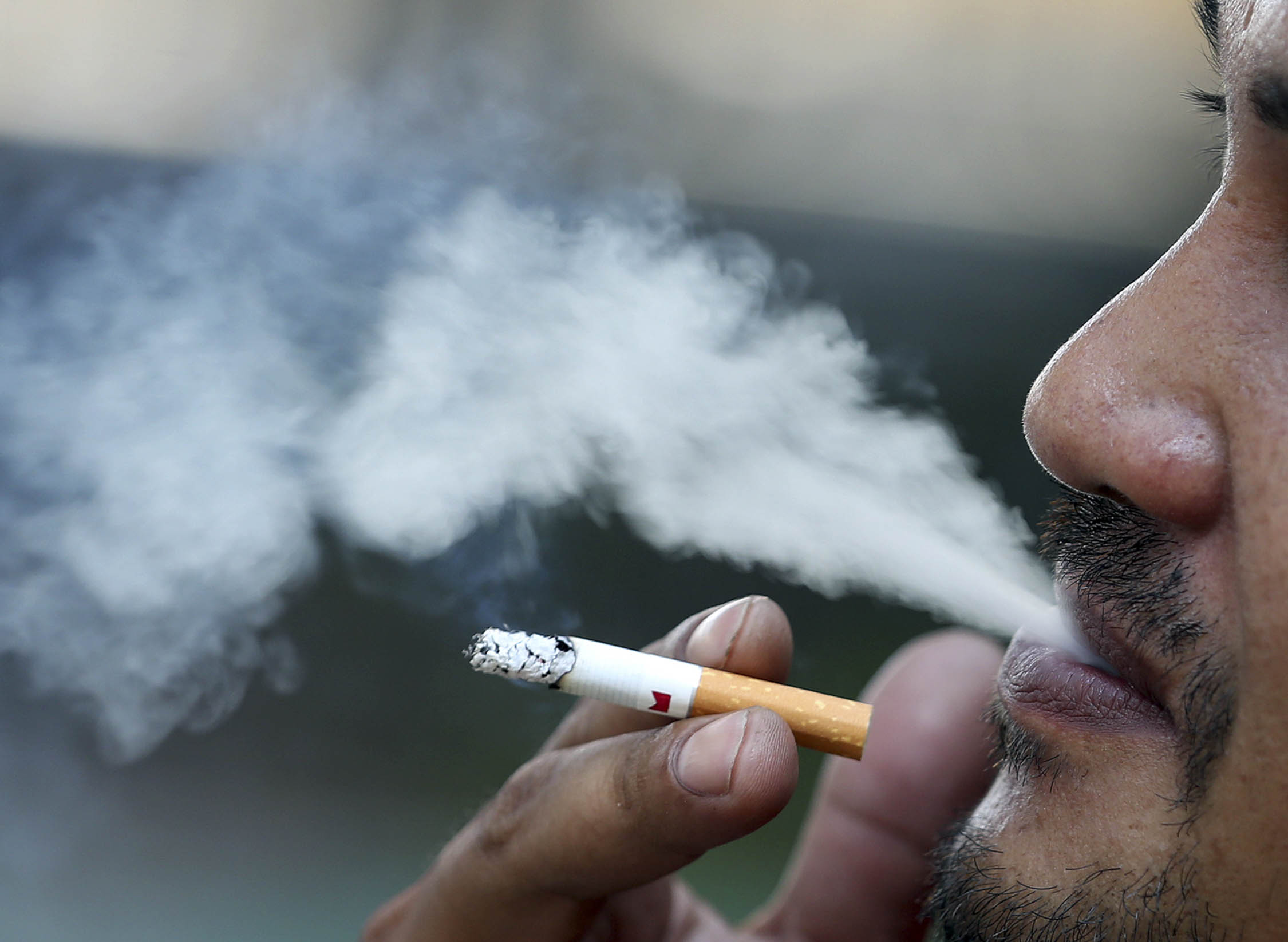‘Thirdhand’ smoke also poses health risks

LINGERING TRACES Secondhand smoke has been studied for decades and heightens people’s risks for heart conditions and lung cancer, though the exact level of risk has been contested in recent studies. But there has also been an increasing interest in thirdhand smoke, or the tobacco smell that sticks to a person’s clothes, skin or hair. —INQUIRER FILE PHOTO
WASHINGTON—The stale odor that announces a smoker’s entry into a room may be more than merely unpleasant.
A new study by scientists at Yale University has found that compounds from tobacco smoke can infiltrate well-ventilated rooms by hitching a ride on people’s clothes, skin and hair, and then evaporating slowly over time in a process called “off-gassing.”
By placing a high-tech air sampling device in the exhaust duct of a nonsmoking movie theater in Germany, the researchers determined that so-called “thirdhand” smoke exposed movie-goers to between one and 10 cigarettes of passive smoke, depending on the substance in question. Their paper was published in Science Advances on Wednesday.
Heightened risks
Secondhand smoke has been studied for decades and heightens people’s risks for heart conditions and lung cancer, though the exact level of risk has been contested in recent studies.
There has also been an increasing interest into thirdhand smoke, but most studies have so far looked at rooms that were recently smoked in, rather than how people who were either smokers or had been around smokers impacted nonsmoking indoor environments.
Article continues after this advertisementThe Yale team, led by Drew Gentner, an environmental engineer, examined a cinema in Mainz, Germany, that has had a smoking ban for 15 years—long enough for any pre-ban contaminants to clear out.
Article continues after this advertisementOver the course of four days, they found the levels of 35 tobacco-related chemicals surged when audience members entered the theater. These included cancer-causing compounds like benzene and formaldehyde.
R-rated films
The effects were particularly pronounced during R-rated films, like “Resident Evil,” which the authors suggested was because such movies attract older audiences more likely to have been exposed to smoke.
“Our work establishes that there’s substantial transport of thirdhand smoke contaminants from people into a real world nonsmoking indoor environment,” said Gentner.
He conceded that the precise level of health risks to others was beyond the scope of the current study and would depend on a variety of factors, including how often people were exposed to the chemicals and their proximity to the source of emissions.
“Based on these results, it’s our hope that the work will generate much needed discussion about thirdhand smoke, and that the research and policy will continue to evolve from those discussions,” he said.